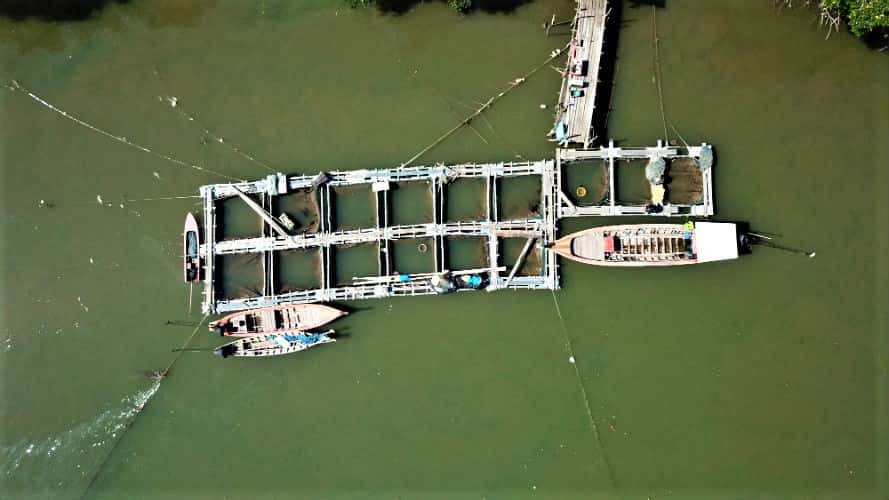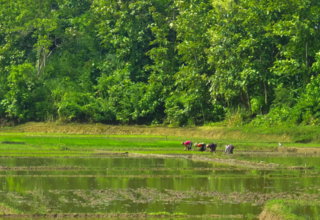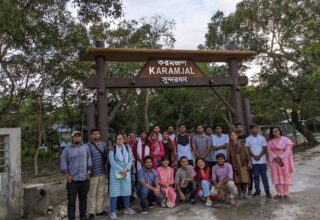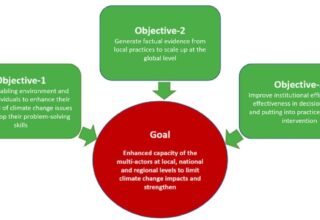
Is it an opportunity to migrate from climate dystopia? Are we adapting with or for export-led commodities? In her 2018 journal article, “Threatening Dystopias: Development and Adaptation Regimes in Bangladesh”, Dr Kasia Paprocki, assistant professor in the Department of Geography and the Environment at the London School of Economics, tackles these questions based on her two years of fieldwork in coastal Khulna. In the article, Paprocki critiques the emerging discourse of migration as a strategy to adapt to climate change. Dispossession, she says, has been reframed as progress.
Paprocki explains that Khulna is discussed in climate and development circles as a place without a future. As climate change threatens the landscape, increasingly divided into ghers where shrimp are farmed for export, migration is presented as a plan to avoid disaster. This runs contrary to human rights narratives that communities should be able to develop sustainably in place. Now they are encouraged to move to urban areas in the name of resilience.
If Khulna is already destined for disaster, it makes little sense for residents to try to remain on the coasts. Such is the logic of what Paprocki calls the “adaptation regime” that has reframed the climate crisis as an opportunity. Migration becomes one such opportunity that helps rural residents get out of the dystopian world in which they live to a more prosperous and promising life in the city.
Paprocki makes clear in her article that migration should not be unquestioningly accepted as an adaptation strategy. It is rooted in the assumption that coastal zones are already hopeless. But if they are hopeless, it is not only due to climate change. Development programs and schemes of experimentation in these regions also contribute to Khulna becoming a place of impending catastrophe.
As Paprocki demonstrates, farmers in Khulna also face hardships as their lands are converted from freshwater rice paddies to saline-water based shrimp zones. Development practitioners simultaneously promote shrimp farming as an adaptation to promote national economic growth, and rural to urban migration as a solution for farmers who have lost their livelihoods. Instead, they can find jobs in growing industrial sectors, such as garment factories.
Migration is a complicated issue with regards to climate change. It can be understood as residents fleeing their homes in areas that have become unlivable, or as an opportunity for progress and growth. Even though the latter framing is more attractive, it should not obscure the roots of this displacement.
Originally this article was published on June 29, 2018 at Climate-Tribune (Dhaka Tribune). The author Danielle Falzon is a visiting researcher at ICCCAD and currently doing her PhD in Sociology (studying climate and development policy in Bangladesh) at Brown University.
Email: danielle.falzon@gmail.com






